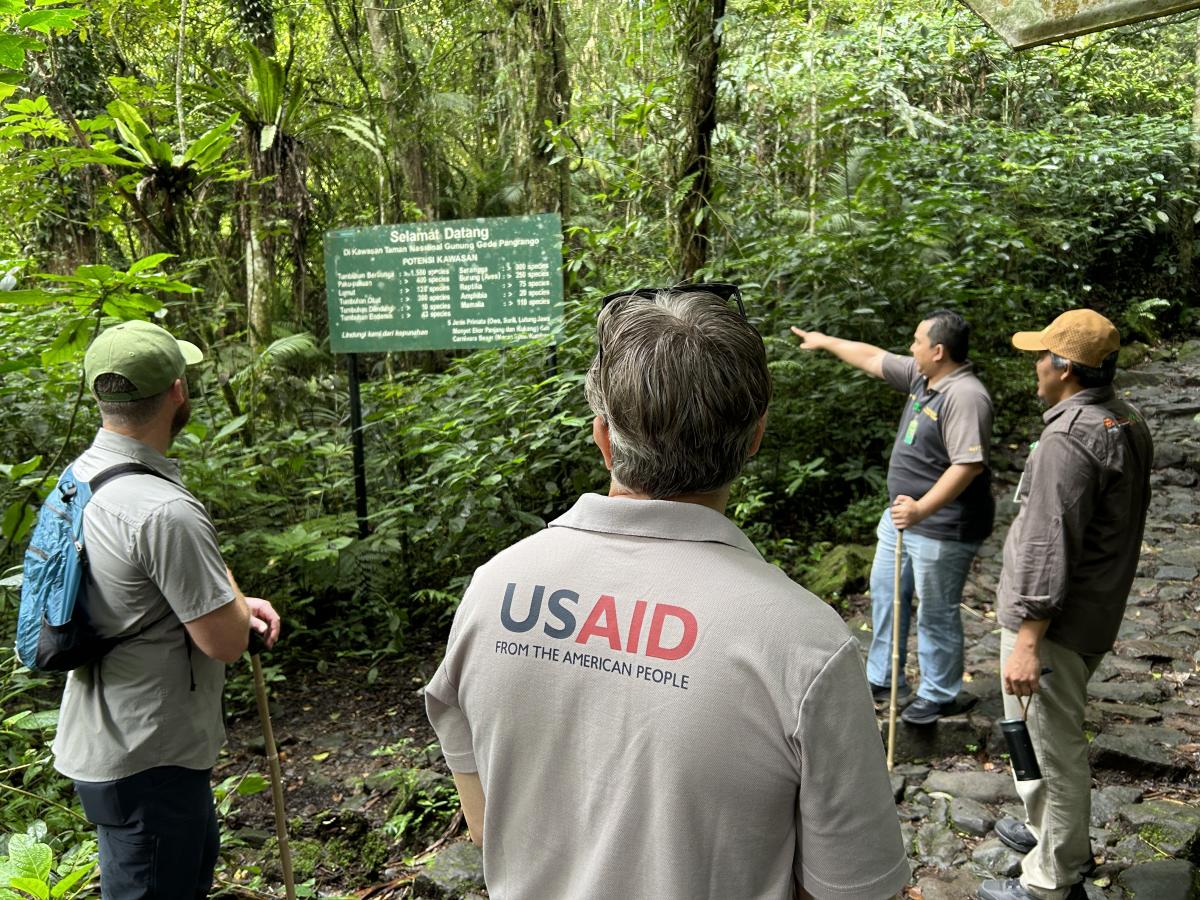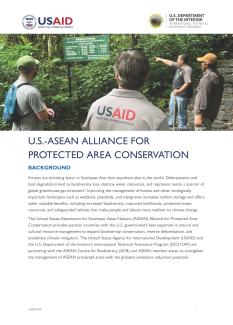Forests are shrinking faster in Southeast Asia than anywhere else in the world. Deforestation and land degradation lead to biodiversity loss, destroy water resources, and represent nearly a quarter of global greenhouse gas emissions2. Improving the management of forests and other ecologically important landscapes such as wetlands, peatlands, and mangroves increases carbon storage and offers other valuable benefits, including increased biodiversity, improved livelihoods, protected water resources, and safeguarded habitats that make people and places more resilient to climate change.
The United States-Association for Southeast Asian Nations (ASEAN) Alliance for Protected Area Conservation provides partner countries with the U.S. government’s best expertise in natural and cultural resource management to expand biodiversity conservation, reverse deforestation, and accelerate climate mitigation. The United States Agency for International Development (USAID) and the U.S. Department of the Interior’s International Technical Assistance Program (DOI-ITAP) are partnering with the ASEAN Centre for Biodiversity (ACB) and ASEAN member states to strengthen the management of ASEAN protected areas with the greatest emissions reduction potential.
OBJECTIVES
Strengthen regional networks
To promote ecosystem restoration and climate mitigation in protected areas, USAID, DOI-ITAP, and ACB will support a cohort of emerging climate leaders from ASEAN Heritage Parks—a group of national parks and nature reserves with outstanding wilderness and climate mitigation potential; and considered as the “best example” of protected areas in ASEAN in terms of management and conservation.
Support collective action
By prioritizing parks with significant carbon storage potential to add to the ASEAN Heritage Park Program and providing technical assistance to support the ASEAN Heritage Parks nomination process, the activity will extend the existing regional ASEAN Heritage Park network and increase the number of hectares under improved management.
Promote learning exchanges
The activity will support applied peer-to-peer learning exchanges at select learning sites to replicate natural climate solutions across other protected areas in ASEAN.
ANTICIPATED RESULTS
Enhanced leadership and capacity of ACB as a regional center of excellence in protected area management.
Increased knowledge and skills, including management tools and techniques among protected area partners to enhance actions that reduce, avoid, and/or sequester land-based emissions and protect biodiversity.
Applied regional natural climate solutions in ASEAN protected areas that contribute to emission sequestration and/or reductions—and demonstrate co-benefits of improved restoration and biodiversity protection.
Expanded ASEAN Heritage Park regional network for improved management and ecosystem restoration to reduce or sequester greenhouse gas emissions and protect biodiversity.
Enhanced peer-to-peer learning exchanges to promote best practices in ecosystem restoration in ASEAN Heritage Parks to increase carbon sequestration.
Strengthened regional network of ASEAN Heritage Park staff to share best practices and implement natural climate solutions in ASEAN protected areas.
Nomination of new ASEAN Heritage Parks to the regional network.
For more information, please visit www.usaid.gov/asia-regional or email info-rdma@usaid.gov.
2 Estoque, R.C., Ooba, M., Avitabile, V., Hijioka, Y., DasGupta, R., Togawa, T., Murayama, Y., 2019. The future of Southeast Asia’s forests. Nat. Commun. 10, 1829. https://doi.org/10.1038/s41467-019-09646-4


